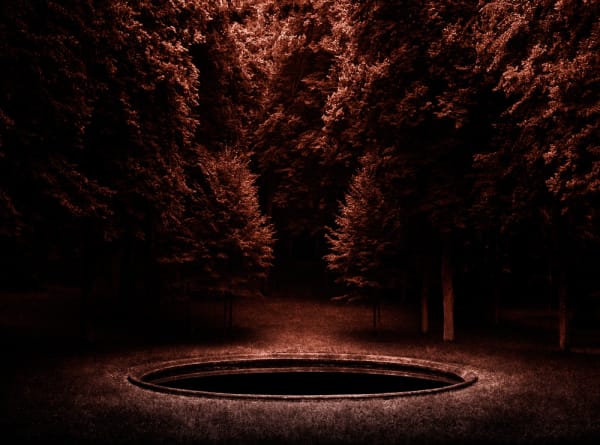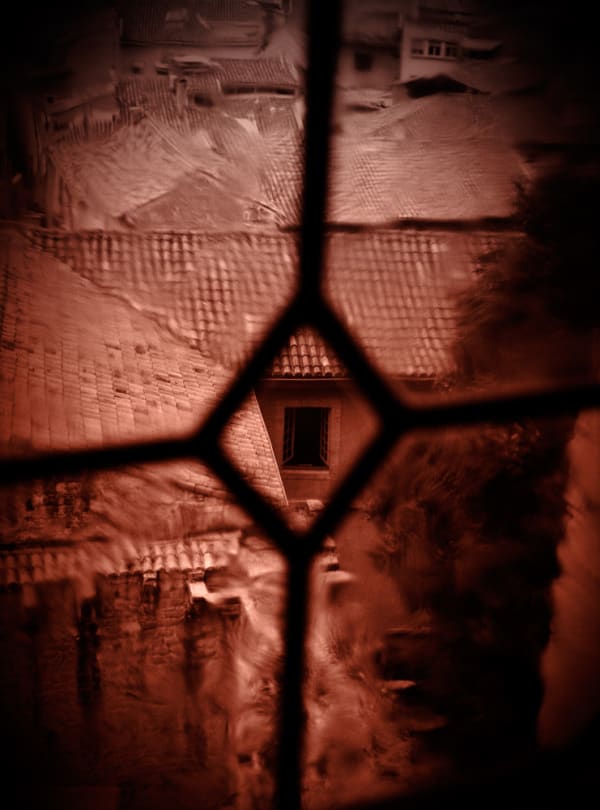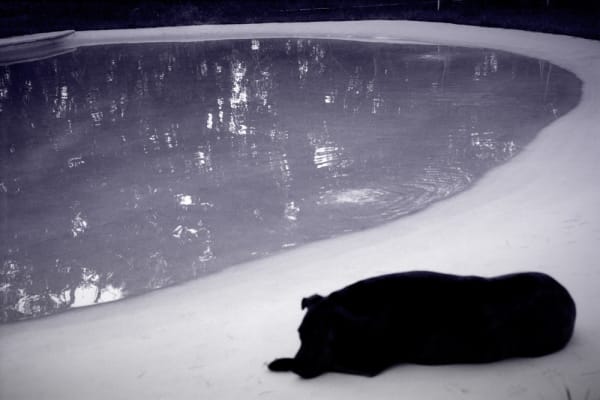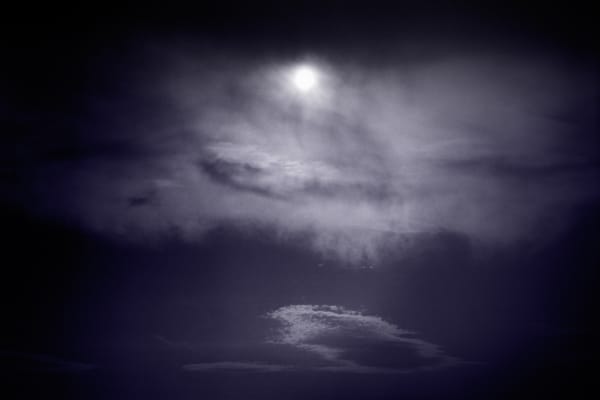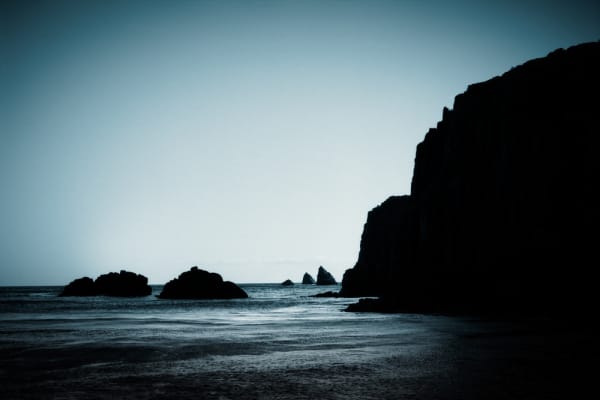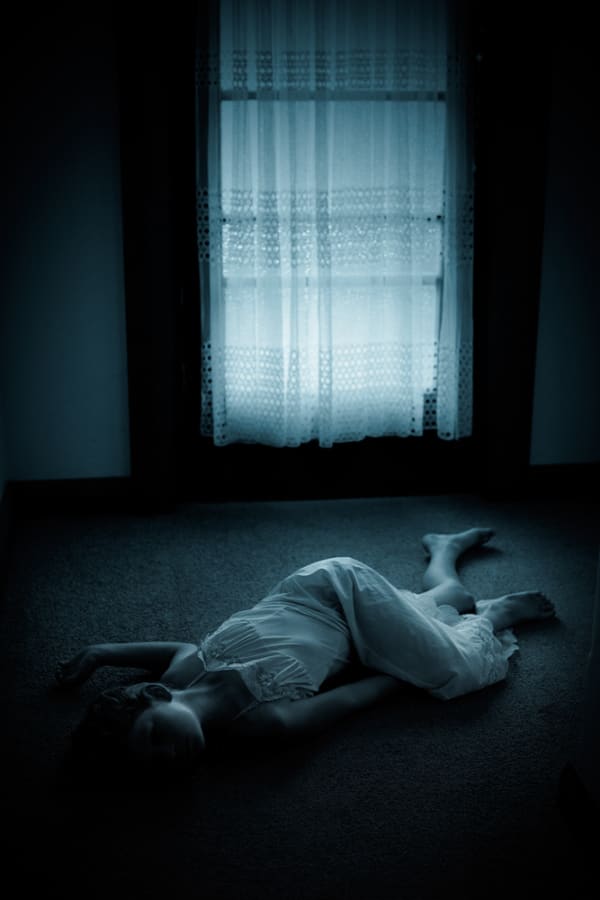Jane Burton: Other Stories
Among the photographic and cinematic sources that helped inspire Jane Burton’s recent work, two stand out for their unlikely complementarity: Miroslav Tichy, the Czech recluse who surreptitiously photographed local women for forty years as he stalked his hometown of Kyjov with handmade cameras, and Hammer Horror, the 1950-70 cycle of British horror films known at the time for their quantities of Technicolor blood and recalled today with camp affection. This unlikely pair, the one suggesting almost miraculous glimpses of beauty in an otherwise grey and regimented world, the other, the studio production of stylish Gothic fright, span two of photography’s possibilities: the capture of what is and would otherwise go unseen, on the one hand and on the other, the deeply affecting creation of what isn’t.
Soon after Jane Burton began exhibiting in the early nineties, her work’s take on female sexuality attracted notice. Burton combined this with frequent references to landscape, conjuring a dark broodiness that critics were quick to label “Gothic.” Writing of her own work Burton called her photographs of faceless nudes “fragments of …liminal states” where female flesh marked “the boundary of interior and exterior worlds.”
Here in “Other Stories,” a collection of work from the past three years, Burton continues her depiction of liminal states, structuring her images as five chapters in what might be called a story and might just as easily be called something else. If there is a narrative here, it obeys the laws of the subconscious rather than conventional cause-and-effect for in Burton’s words it is “non-linear, non-literal; falling between remembrances, hallucination, and fantasy.” At once dreamlike and cinematic, Burton’s series of images feature what she calls a character, an animating female presence who sees and is seen, very often framed by glass or windows, both the observer and the observed.
As the one who sees via the camera it’s tempting to imagine Burton as the reference for this animating presence, but the character isn’t a surrogate. She explains, “I certainly do want the viewer, whilst experiencing the book, to see certain points of view… that exist in this dramatic landscape. At the same time, I like the landscape to be symbolic, or psychological. I like to create plausible worlds, narratives, and points of view, whilst at the same time, these are not necessarily ‘real’ places. They are imagined, felt, remembered.”
The landscapes here are not identifiable as markers of a particular place; instead they embody a weight of meaning or emotional intensity, as much by formal means as by their placement in each chapter’s sequence. These formal means — colour, improbable lighting, density of tone, and framing devices — frequently recall Romantic painting where landscape was made to register the same emotional intensity and generally overshadowed any human presence. (Burton’s reflected landscapes work quite differently. Here the horizon line effectively decapitates the female nude gazing upon them, rendering her sightless.)
A number of the images of women at the window and of views from and of windows also call up the important early nineteenth century art historical trope of the figure at the window and the accompanying view from within and outside the observer’s room. Burton occasionally collapses these distinctions in the repeated dissolution of the observing woman in the reflected landscape. More critically, as much as she has spoken of the work’s “points of view,” it’s possible to look at this work and see how it renders the idea of point of view — or the legibility of the visible — opaque or unclear, at best, improbable.
A number of the images here remain quite deliberately unreadable. No amount of looking can identify their content. Others from “In the blood” seem to offer an allegory of sightlessness where the opening image of the encircled female eye is echoed successively by a round arrangement of brush and later sepulchral medallions which themselves find further echo in a sightless, eroded sculpted head. This sense of sightless seeing continues through “La Bête” where an ellipsoid pool evokes a limpid blankness, and later, lines of Latin script seem to mask a face. Finally, the portrait in an ancient painting appears to look away from the photographer’s light which catches instead the glazed reflections of the painting’s buckled surface. In “Limbo” a boarded-up house stares blankly, a refusal that begs our desire to look at it. Elsewhere there is what we might call a conundrum of vision: the real Eastern European structures in “La Bête,” redolent of fake film-set vampire tales; the landscapes of grain-field, trees or coastline that might be real, and might yet be the result of the subtlest effect of reflection or photographic manipulation; and the occasionally inverted interiors, with a light bulb hanging upright.
Time and again Burton returns to reflection, on water and on glass where appearance becomes destabilized, and landscape rendered a mere surface effect. Surface itself obscures, as in the painting’s glaze which almost hides its subject and the reflected landscapes which obscure the gazing woman. Burton makes this destabilization most pronounced in the latter part of “Limbo” where she divides our visual loyalty: what are we to look at—the woman or the damage to the glass; the woman or the reflected landscape; the dog, whose inky blackness eats up all definition, or the light reflected in the pond behind?
The art historical figure in the room who gazes within is also a metaphor for the photographer at the camera, a word which began its life linguistically as the camera obscura, or “darkened room.” Looking out from the darkened rooms featured in the work here there is little sense of domesticity affording comfort or outside, nature providing solace. Inside is the haunted house and outside, the landscape, as staging ground of emotion. On the threshold, Burton gazes within as well as outside and sometimes we cannot tell the difference.
Ingrid Periz
-
 Jane BurtonLa Bête #1, 2011pigment print40 x 50cmAU$ 3,500.00 + framing
Jane BurtonLa Bête #1, 2011pigment print40 x 50cmAU$ 3,500.00 + framing -
 Jane BurtonLa Bête #2, 2011pigment print50 x 40cmAU$ 3,500.00 + framing
Jane BurtonLa Bête #2, 2011pigment print50 x 40cmAU$ 3,500.00 + framing -
 Jane BurtonLa Bête #3, 2011pigment print40 x 50cmAU$ 3,500.00 + framing
Jane BurtonLa Bête #3, 2011pigment print40 x 50cmAU$ 3,500.00 + framing -
 Jane Burton, La Bête #4, 2011
Jane Burton, La Bête #4, 2011 -
 Jane BurtonLa Bête #6, 2011pigment print40 x 50cmSold
Jane BurtonLa Bête #6, 2011pigment print40 x 50cmSold -
 Jane BurtonLa Bête #8, 2011pigment print50 x 40cmEdition of 5 plus 1 artist's proofAU$ 3,500.00 + framing
Jane BurtonLa Bête #8, 2011pigment print50 x 40cmEdition of 5 plus 1 artist's proofAU$ 3,500.00 + framing -
 Jane BurtonLa Bête #9, 2011pigment print50 x 40cmEdition of 5 plus 1 artist's proofAU$ 3,500.00 + framing
Jane BurtonLa Bête #9, 2011pigment print50 x 40cmEdition of 5 plus 1 artist's proofAU$ 3,500.00 + framing -
 Jane BurtonLa Bête #10, 2011pigment print40 x 50cmEdition of 5 plus 1 artist's proofAU$ 3,500.00 + framing
Jane BurtonLa Bête #10, 2011pigment print40 x 50cmEdition of 5 plus 1 artist's proofAU$ 3,500.00 + framing -
 Jane BurtonLimbo #3, 2011pigment print60 x 40cmAU$ 3,500.00 + framing
Jane BurtonLimbo #3, 2011pigment print60 x 40cmAU$ 3,500.00 + framing -
 Jane BurtonLimbo #5, 2011pigment print40 x 60cmAU$ 3,500.00 + framing
Jane BurtonLimbo #5, 2011pigment print40 x 60cmAU$ 3,500.00 + framing -
 Jane BurtonLimbo #7, 2011pigment print60 x 40cmAU$ 3,500.00 + framing
Jane BurtonLimbo #7, 2011pigment print60 x 40cmAU$ 3,500.00 + framing -
 Jane BurtonLimbo #8, 2011pigment print40 x 60cmAU$ 3,500.00 + framing
Jane BurtonLimbo #8, 2011pigment print40 x 60cmAU$ 3,500.00 + framing -
 Jane BurtonLimbo #9, 2011pigment print40 x 60cmAU$ 3,500.00 + framing
Jane BurtonLimbo #9, 2011pigment print40 x 60cmAU$ 3,500.00 + framing -
 Jane BurtonLimbo #10, 2011pigment print40 x 60cmAU$ 3,500.00 + framing
Jane BurtonLimbo #10, 2011pigment print40 x 60cmAU$ 3,500.00 + framing -
 Jane BurtonLimbo #11, 2011pigment print40 x 60cmAU$ 3,500.00 + framing
Jane BurtonLimbo #11, 2011pigment print40 x 60cmAU$ 3,500.00 + framing -
 Jane BurtonSleep has his house #2, 2011pigment print40 x 60cmAU$ 3,500.00 + framing
Jane BurtonSleep has his house #2, 2011pigment print40 x 60cmAU$ 3,500.00 + framing -
 Jane BurtonSleep has his house #3, 2011pigment print40 x 60cmAU$ 3,500.00 + framing
Jane BurtonSleep has his house #3, 2011pigment print40 x 60cmAU$ 3,500.00 + framing -
 Jane BurtonSleep has his house #4, 2011pigment print40 x 60cmAU$ 3,500.00 + framing
Jane BurtonSleep has his house #4, 2011pigment print40 x 60cmAU$ 3,500.00 + framing -
 Jane BurtonSleep has his house #5, 2011pigment print40 x 60cmAU$ 3,500.00 + framing
Jane BurtonSleep has his house #5, 2011pigment print40 x 60cmAU$ 3,500.00 + framing -
 Jane BurtonSleep has his house #6, 2011pigment print60 x 40cmAU$ 3,500.00 + framing
Jane BurtonSleep has his house #6, 2011pigment print60 x 40cmAU$ 3,500.00 + framing -
 Jane BurtonSleep has his house #8, 2011pigment print60 x 40cmAU$ 3,500.00 + framing
Jane BurtonSleep has his house #8, 2011pigment print60 x 40cmAU$ 3,500.00 + framing -
 Jane BurtonSleep has his house #10, 2011pigment print60 x 40cmAU$ 3,500.00 + framing
Jane BurtonSleep has his house #10, 2011pigment print60 x 40cmAU$ 3,500.00 + framing





